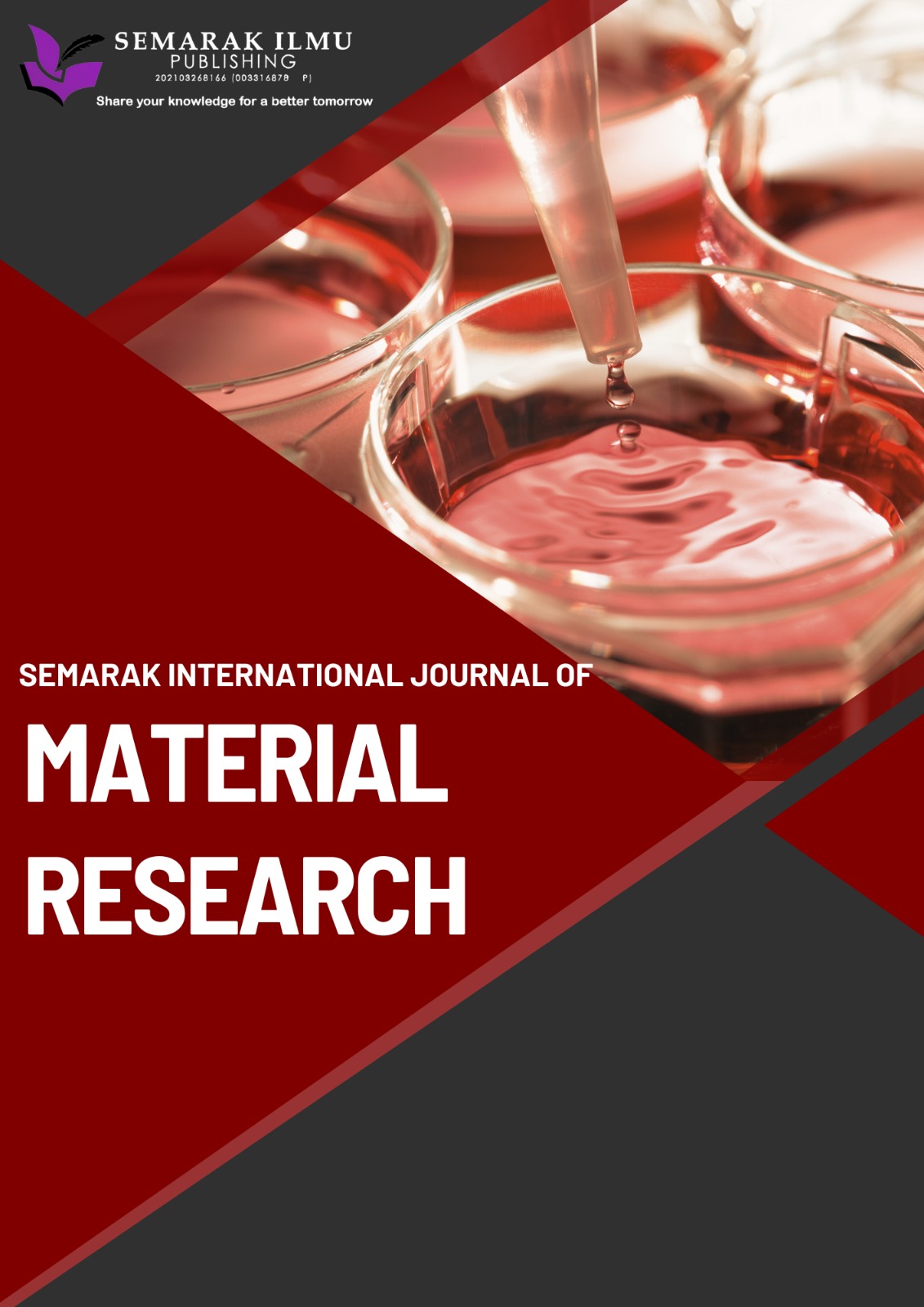Mechanical and Structural Properties of Enhanced Based on Carboxymethyl Cellulose Doped Ammonium Chloride Solid Biopolymer Electrolytes
DOI:
https://doi.org/10.37934/sijmr.1.1.1019Keywords:
Carboxymethyl cellulose, Ammonium Chloride, Ethylene Carbonate, Solid Biopolymer electrolyte, ionic conductivityAbstract
Solid Biopolymer Electrolytes (SBEs) systems based on carboxymethyl cellulose (CMC) doped ammonium chloride (AC) and varied amounts 4-20wt% of ethylene carbonate (EC) as a plasticizer were prepared via the solution casting technique. The electrical impedance spectroscopy (EIS) method was used to analyse the ionic conductivity of SBEs by room temperature (303K). The sample with 8wt% of EC exhibits the highest ionic conductivity at 4.43 × 10−6 Sm-1. In this study, mechanical, physical and structural of CMC-AC-EC were tested. Fourier Transform Infrared Spectroscopy (FTIR) demonstrated the composite nature and indicated the SBEs components formed a complex with each other, and this complexation was successfully confirmed by Gaussian software. The X-ray diffraction (XRD) revealed that the amorphous peak of CMC become broaden with addition of EC and the crystallinity of AC showed a peak. The UV-Vis spectroscopy tests the transparency value with transmittance at 600nm. The tensile strength (TS) and elongation at break (EAB) can be obtained from the stress-strain graph using the Universal Testing Machine. The morphological behaviour of electrolytes has been analysed by using Field Emission Scanning Electrolytes Spectroscopy (FESEM) to observe changes in CMC based on the solid biopolymer electrolytes when AC and EC are added to the system.









